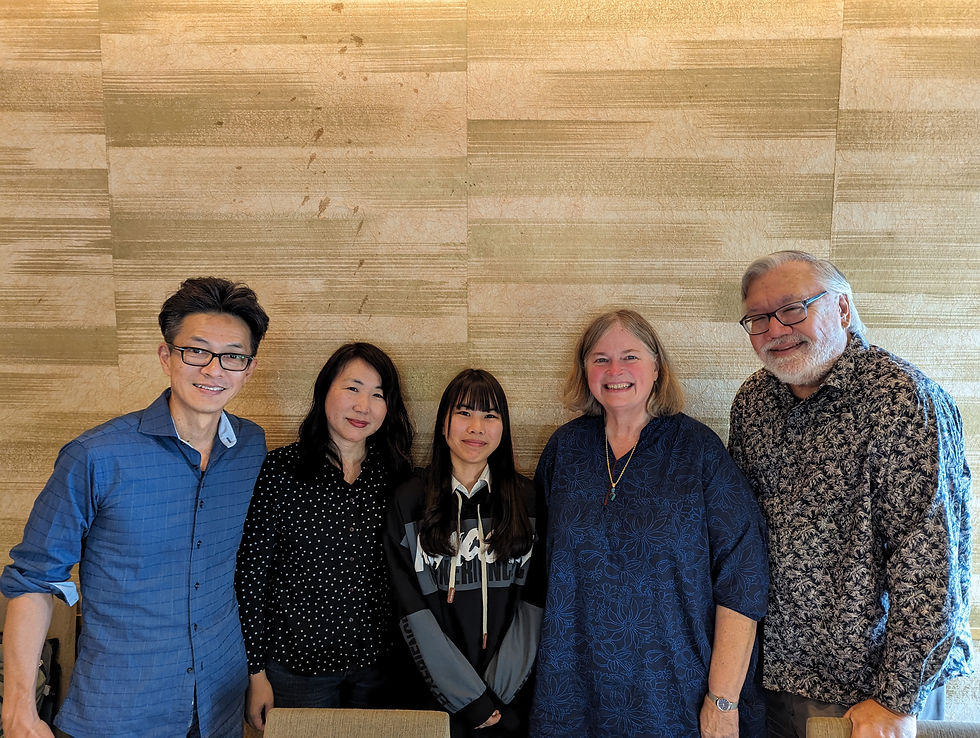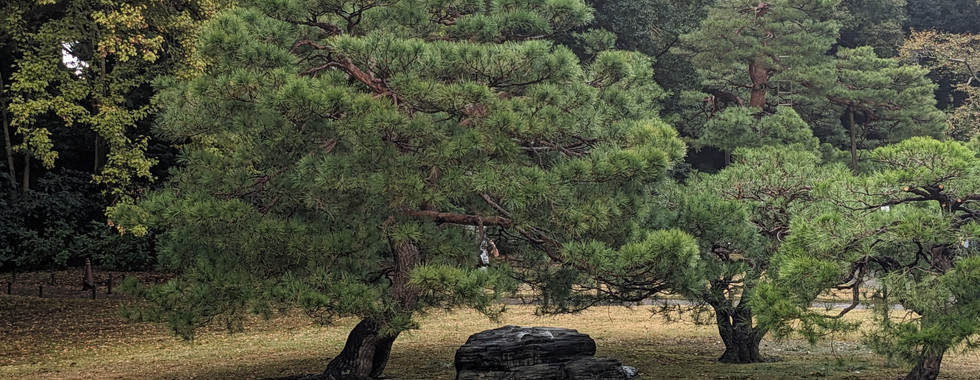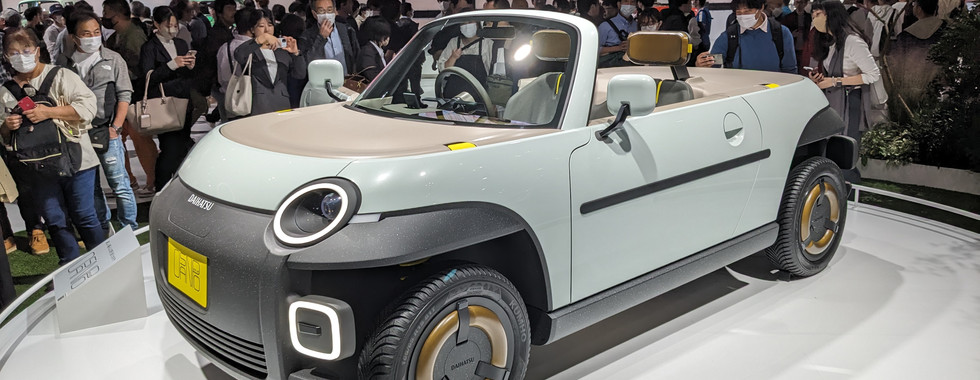
In 1963, Kyu Sakamoto sang “Ue O Muite Arukou” which means,”I Look Up When I Walk”, singing about how he walks in the rain, looking up so the tears won’t fall because he is alone. The song goes on to describe how he is remembering good times in the Spring, the Summer, and the Fall. This song was marketed in the United States under the title, “Sukiyaki”, which irks most Japanese people I have met this autumn. Sukiyaki is a wonderful dish, one that Paul makes for special occasions as he was taught by his mother. It evokes warm family gatherings for us. But it has nothing to do with the song Kyu Yakamoto was singing. The song was wildly popular in Japan, and it climbed to Number 1 on the U.S. charts in 1963, something a Japanese song hasn’t done before or since. Japanese marketers thought Americans would be more likely to remember a song called “Sukiyaki” rather than one called, “Ue O Muite”, and they were likely correct. In any event, it is a song that is well-known by Americans and revered by many Japanese. When Sakamoto-san sings this song, he expresses sadness, but with a joyfulfulness that is hard to resist. The joy, I think, comes from the underlying wonderful memories.
Our time in Tokyo has been remarkable for the wonderful experiences we have had with people who live here. This fall has been marked by mostly beautiful weather, great food, lovely parks, and interesting history and culture. But mostly, it has been characterized by good conversation and warm interactions with people.

The first night we were in Tokyo, after unpacking in our small apartment in Asakusa, we ate at a wonderful izakaya a couple of doors down. The name of the restaurant is Ashi, loacted at 2-6-5 Komagata, Taito 111-0043 Tokyo Prefecture and it is owned and operated by Junji, a smart, careful, and attentive host. Junji’s sign brought us in - very welcoming in English, but with a carefully written Japanese menu. Junji tells us he lived in California for 4 years, and his understanding of American culture and language is excellent. Jazz plays in the background (the best “old school” he tells us), and American movies play on a silent screen with Japanese subtitles; it doesn’t matter that we don’t understand the subtitles, since we’ve seen “The Italian Job” so many times we have the lines memorized anyway. It feels comfortable. The food is amazing. Traditional Japanese flavors but with a modern twist. We go back again and again while we are here. Paul’s favorite is the octopus salad, and mine is the yaki soba with tiny pieces of flavorful pork soaked in a dark, rich, sauce. There is a feta salad with root vegetables, a pear salad with prosciutto, and great crispy, greaseless fried chicken - the kind my Grandmother would have served. Junji serves an amazing sake - full of flavor. Desserts include shaved ice with grape and a rich, creamy chocolate ganache. Ashi is the closest place I’ve ever had to a neighborhood bar. We ate there our last night in Tokyo, and we are sad to leave this spot. We hope to see Junji again!

Soon after arriving, we had lunch with friends of a friend. Kinya, Yuriko, and Lisa are a great family from the Tokyo area. They are friends of my music teacher in Hawaii, Pamela Polland. Based on that connection, we met for lunch. The Nakayamas arranged a shabu-shabu lunch in the Ginza district of Tokyo. I was surprised by the variety of meats (duck, beef, and pork) and also the wonderful vegetables we cooked in a delicious sauce. After, we walked around Ginza, shopping in a huge stationary store. We really enjoyed their company. Kinya had recently returned from a Route 66 road trip in the United States. We had a lively conversation - all three of them speak excellent English, and we felt spoiled for that. They ask us if there are any places outside of Tokyo we’d like to visit, and we agree to see each other again, for an outing.

Soon after, we connect with an old friend, Sasha. Sasha was a roommate of our daughter, Kate, when they were both music students at Eastern Michigan University. About a year ago, she came to Tokyo to teach English with the JET program. We had several outings with Sasah. She joined us for dinner at Ashi one evening. She took me fabric shopping in the Nippori fabric district. This was the first time I took the subway and transferred to a JR train, by myself. I felt very independent, like the character on the TV series, “Tokyo Girl”, which Paul and I watched during the Pandemic, dreaming of being in Japan. In Nippori, we visited a kimono fabric shop called Murata Shouten https://www.nippori-senigai.com/en/shopno/murata/, that has been in business 120 years, 4th and 5th generation fabric masters. The proprietors spread out rolls of beautiful kimono fabrics and I bought a roll of hand-painted fabric. Sasha also showed me some used kimono fabric shops and several other fabric shops. I bought several fabrics to make dresses for myself.

We also met up with Sasha to visit the Ghibli Museum, which is about an hour from where we were staying. The museum is in Inokashira Park, which is home to a lovely lake and the Benzaiten Shrine. The day we went, there were street performers in the park - and I realized I had not seen other street performers. Sasha says they are limited to specific venues. To visit the Ghibli Museum, you have to get tickets online in advance - Sasha had logged on the first part of October to get tickets for November. The museum itself was fun, and full of the playful and lovely art the animation studio is famous for. You can’t take photos inside the museum, but here are a few from the outdoor spaces, along with photos of the park.

The following day, the three of us went to two gardens: the Furukawa Rose Garden, and Rikugien Gardens, which were close to each other in a northern Tokyo suburb. I had never seen roses blooming in November (in the Northern Hemisphere), and they were blooming profusely. Furukawa Rose Garden is a Tokyo park on the former estate of a well-to-do baron who had his home built by a western architect in the early 20th century. By contrast, Rikugien Gardens is a carefully landscaped park inspired by Chinese poetry. It was built in the late 17th century. Both parks were beautiful. It was especially nice to visit with Sasha because she is very knowledgeable about Japan, having been here over a year, and we learned a lot about Tokyo spending time with her. Not only did she score the coveted Ghibli tickets, she introduced us to rose-flavored ice cream and kimono fabrics.
Soon after, we had dinner with one of our son, James’, business partners, Sunao. Paul had met Sunao in 2019, but I had not, and we were both meeting his wife, Masami. We had a wonderful evening together eating at a yakitori restaurant in Yoyogi, Kamidori Yoyogi. The food was amazing, and I finally tried that barely-cooked chicken I’ve heard so much about - surprisingly, it was really tasty. The best part of the evening was the lively and interesting conversation from two terrific people. After dinner, we walked to a bar, not wanting the evening to end.

On our last Sunday in Tokyo, we traveled to Nikko with Kinya, Yuriko, and Lisa. We took a JR train to Shin Koshigaya at 7:30am and met the Nakayamas. Then, Kinya and Yuriko each drove a car up the mountain roads to Nikko - about a 90 minute to 2 hour drive. We had an amazing lunch at a ryokan. Most of the dishes featured, yuba, a plant-food made by skimming the top off steamed soy milk. After lunch, we visited the onsen in the hotel, which was wonderful. We looked over a landscaped garden. Then, we walked through the grounds of the Toshogu Shrine. The autumn leaves were beautiful. We saw the famous 3 monkeys pavilion (hear no evil, see no evil, speak no evil) and the sleeping cat tile. Oh, and the tomb of the founder of the Tokugawa shogunate. Later, we took the train back to Asakusa where we were staying. It was a long day, but do-able in one day, thanks to our friends’ willingness to drive such distances.

Tokyo is the world's largest city. The greater Tokyo metropolitan area has over 40 million people. There were so many things to do. We went to the top of Tokyo Skytree, where you can really see how big the city is. You can see mountains on one side, and the big bay on the other.

Our apartment was in Asakusa, the oldest part of Tokyo. Not far from where we were staying, the Senso-ji shrine with its many shops and restaurants was buzzing. Popular with tourists who often dress in traditional kimono for photos (mostly Japanese, but also others), it was often crowded. Our favorite walk was at night, when the stalls shuttered and you could see beautiful paintings on them, and the temples were lighted. This was the center of the old entertainment district hundreds of years ago. We went to a show - an all-female variety show called the Cavabien Show, at an old theater there.

We also took a lot of walks in parks, such as Ueno park, home to two old shrines, sculptures, and the National Museum of Japan. Sumida Park, which folllows the Sumida River, was also near our apartment and we walked there several times. We walked through the neighborhood, seeing a lot of anime characters along the way (a couple of Ban Dai buildings were near our apartment). We saw small shrines in some neighborhoods.

We visited the Roppongi district, where Paul worked in the 1980's. We had strawberry shortcake at his old favorite cafe, Almond Cafe, and lunch at his old favorite restaurant, Moti, which serves Indian food. We strolled the neighborhood, taking in the many changes - although we're pretty sure we saw the park where the children played during out 1988 trip. We visited the small Roppongi Museum (thanks, Sasha, for the suggestion), with an exhibit on a famous all-female "idol" group, Nogizaka46. It was a collection of video, interesting film effects, and costumes from the group.

We went to the Tokyo Mobility Show (car show but featuring other vehicles besides just cars). It was packed with people, so many it was hard to see the exhibits.
We went to Tokyo TeamLabs, a high-tech art exhibit. It was amazing. Really fun, we laughed and smiled a lot.
And then there was the food. When I asked Paul what he liked most about Tokyo he said, "the food." We ate so many different things - from tonkatsu, yakiniku, tempura, kaisecki, yakisoba, udon, Chinese dumplings, pho, curry, donburi, ramen - everything you can image, they have it in Tokyo. We ate in restaurants, coffee shops, izakaya, department stores, and got food to take home from depachika (basement food vendors in department stores), konbini (conveniences stores, such as 7-11, Family Mart, and Lawson's, where got sandwiches, coffees and snacks), and small grocery stores. In addition to frequenting Ashi which I discussed above, we also frequently ate at a small Vietnamese-Thai restaurant owned by the couple shown in the photo. The green curry was fantastic, as were the spring rolls and papaya salad. Both Junji and this couple worked long, hard hours - with very small staff. We admired how hard they worked. And, yet, they always had a smile for us.
All of which brings us back to the internationally famous "Sukiyaki" song, "Ue O Muite." This song is the perfect way to express the joy we felt sharing Tokyo, and Japan, with so many friends. Mika & family, Yuji, Junji, Kinya, Yuriko, Lisa, Sasha, Sunao, and Masami, the couple who ran the Vietnam/Thai restaurant - and all the people who helped us while we were in Japan, thank you. We will always remember your kindness and your heart.












































































































































































































































































































































































































































































































































































































































































































































































































































































































As usual a very informative story with fabulous pictures and heart-warming stories of what seems to have been a very special time for you both! I’m so happy you shared all this with others! Safe travels! Love, Marcia